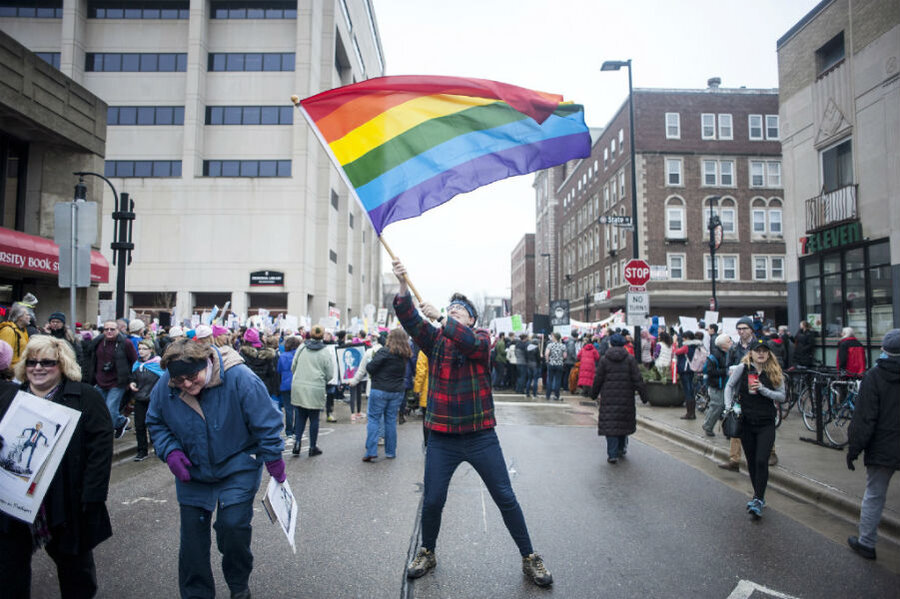Census dashes hopes for LGBT count. Will it affect community resources?
Loading...
The 2020 Census will not ask respondents for information regarding their gender identity or sexual orientation, despite pushes from community advocates and members of Congress who say an official count would aid legislative and community support efforts.
On Tuesday, the proposed question appeared on an initial version of the census, but was absent from a finalized version published later that afternoon. The omission sparked outrage from advocates, including the National LGBTQ Task Force, which began circulating a graphic stating “We’ve been erased!” It also prompted the Human Rights Campaign to file a Freedom of Information Act request with the Department of Commerce seeking “communications related to the Trump Administration’s exclusion of ‘sexual orientation’ and ‘gender identity’ recommendations.”
But it wasn’t a change made by the current administration, which has raised concerns in the lesbian, gay, bisexual, and transgender community for attitudes many have deemed discriminatory. Instead, it was a clerical error, the Census Bureau said; while adding the question had been discussed, it was previously decided that it would not be included in the 2020 national survey.
“Our proposal to Congress was that the planned subjects remain unchanged from the 2010 Census and will cover gender, age, race/ethnicity, relationship, and homeownership status. It did not include sexual orientation or gender identity,” John Thompson, director of the Census Bureau, said in a statement Wednesday. “Our review concluded there was no federal data need to change the planned census and ACS subjects.”
But LGBT advocates and more than 75 members of Congress who wrote to the Census Bureau last year about adding the question say omitting it can hurt the LBGT community. Without a way to pinpoint the population’s size both nationally and locally, advocates and officials can encounter challenges in allocating resources for a vulnerable community that has long been underserved and misrepresented.
“There’s no federal data source in which you can access how many LGBT people there are even at a state level,” Gary Gates, a retired demographer who spent the past five years serving on the Census Scientific Advisory Committee, tells The Christian Science Monitor. “It’s critical that we have those kinds of data if we’re to serve this population that we know has been subject to great social stigma. Other populations have data resources to document and make the case of why it’s important to serve them.”
From programs that support homeless LGBT youth and low-income individuals to health care initiatives geared toward HIV treatment or other health services, organizations see a steeper hill to climb when seeking grants, as they cannot confidently quantify the scale of the need.
“If you’re trying to figure out just the most simple statistic, what’s the size of the population we’re trying to serve, there's no federal data services to do that,” he adds. “You’re at a disadvantage.”
But it’s not just funding and anti-discrimination laws that can benefit from accurate counting; awareness and acceptance are more likely to follow as well. Studies have shown that people who know a gay or transgender person are more likely to exhibit accepting attitudes than those who do not, but crossing those barriers can prove difficult.
“LGBTQ people don’t count in our society unless we’re counted,” Janson Wu, executive director of LGBTQ Legal Advocates & Defenders, tells the Monitor. “Our most powerful tool in advancing the rights of the LGBTQ community is being visible and being known by people in every town and county in the United States.”
As of 2015, the number of Americans who said they knew a transgender person reached 16 percent, doubling from the 8 percent figure recorded in 2008. Since then, attitudes have also clearly shifted, reflected in an increase in the number of mainstream television shows and movies featuring transgender characters and actors.
To many, the exclusion of a census question on LGBT identity not only makes the fight for resources more difficult, but also impacts the group's ability to be seen as a component of the US’s diverse society.
“When people come to know LGBTQ people, they come to understand the challenges that we face due to discrimination and violence,” Mr. Wu says. “So erasing us from the very assessment of who we are as Americans is a part of the challenge that we have in educating Americans about gay and transgender lives.”
Changing that will be a slow, and likely arduous, process, as officials must develop and test the language of the question before rolling it out in the official decennial census. But advocates and legislators should start the push sooner rather than later to ensure LGBT people are counted in the survey's next rollout, Dr. Gates says.
“If advocates want a sexual orientation or gender identity measurement on the US census, they actually need to start now to try to convince to the Census Bureau to begin the process of testing measures for inclusion on the American Community Survey,” Dr. Gates says. “Then that would set you up to make the argument to get the question on the 2030 census. But it has to happen now, it takes that long.”








